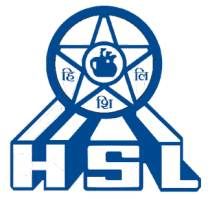Global Glass Bottles & Containers Markets to 2024 - Increased Emphasis on Environment Friendly Goods Drives Market Growth - ResearchAndMarkets.com
The "Glass Bottles and Containers Market - Growth, Trends, and Forecast (2019 - 2024)" report has been added to ResearchAndMarkets.com's offering.
The glass bottles and containers market was valued at USD 62.01 million in 2018 and is expected to reach a value of USD 76.16 million by 2024, at a CAGR of 4.2% over the forecast period 2019-2024.
European Glass Container Federation said that in 2018, over 11.6 million tons of glass bottles are collected, and recycled production of new glass containers in Europe and Europe is the largest glass bottle container market. Glass stands alone as the most circular packaging solution, maintaining permanent quality even when recycled.
Key Highlights
- With the increasing demand for non-toxic, healthy, and expedient food & beverages coupled with principal evolution in the alcoholic beverages and beer industry, recent years have provided the opportunity for the growth of the glass bottle packaging market.
- Moreover, unlike other containers, glass bottles continue to be identified for their characteristic advantage in terms of hygiene, aesthetic appeal, durability and the capability to preserve the aroma, strength, and flavor of the product, making them the most favorable option for packaging.
- However, factors like material substitution and breakage might hinder the growth prospects of glass containers during the forecasted period.
Key Market Trends
Wine Industry Offers Potential Growth
- Wine consumption among consumers is driven by the health and wellness trend. Today's consumers are aware of the origin and production methods of wine, thus increasingly favoring organic wines as a symbol of higher quality. Thus the packaging of organic wines requires glass bottles because the glass containers help in the aging of wine which improves the quality of the wine.
- According to United Nations of Fine Wines, Veganism is one of the fastest-growing wine trends and is also expected to be reflected in wine production, leading to more vegan-friendly wines which will require the glass bottles because of zero rates of chemical reactions ensuring that the wine inside a glass bottle has its aroma, and flavor intact.
Asia-Pacific to Account for a Significant Share
- The Asia-Pacific region is expected to account for a significant share compared to other nations, owing to an increase in demand for pharmaceutical and chemical industries which prefers glass packaging because of the inert nature of glass bottles. China, India, Japan, and Australia among others are the prominent nations majorly contributing to the growth of the Asia Pacific glass packaging market.
- Further, the phenomenal evolution in the food & beverage industry of these nations is also creating an opportunity for the glass bottle and container market. Example: India's food and processing industry is expected to grow because of initiatives such as "Make in India." This is supported by the availability of a large raw material production base like milk, bananas, mangoes, etc. Therefore, to keep the processed food fresh, the glass container is widely used because of its less reactive nature, which in return will create a market for glass bottles and containers market.
- Moreover, due to environmental concern regarding 'maritime littering', governments are imposing a ban on plastics. This movement is creating a positive outlook on the glass container and packaging market. For instance, in March 2018, the government of the Indian state Maharashtra has extended the state's plastic ban to the sale and manufacture of (PET) bottles holding less than 0.5 liters.
Competitive Landscape
The glass bottles and containers market is highly competitive and fragmented in nature. Few of the major companies in this market are Owens-Illinois Inc., Hindustan National Glass & Industries Ltd, Vitro, S.A.B. De C.V., Amcor Ltd, etc. The manufacturers of glass bottles and containers are anticipated to adopt new bottle designs and innovative manufacturing process.
Key Topics Covered
1 INTRODUCTION
1.1 Study Deliverables
1.2 Study Assumptions
1.3 Scope of the Study
2 RESEARCH METHODOLOGY
3 EXECUTIVE SUMMARY
4 MARKET DYNAMICS
4.1 Market Overview
4.2 Introduction to Market Drivers and Restraints
4.3 Market Drivers
4.3.1 Increased Emphasis on Environment Friendly Goods
4.3.2 Global Efforts to End Plastic Pollution
4.4 Market Restraints
4.4.1 Easily Available Substitute Like Plastics
4.5 Industry Value Chain Analysis
4.6 Industry Attractiveness - Porter's Five Force Analysis
5 INDUSTRY POLICIES
6 MARKET SEGMENTATION
6.1 By Color
6.1.1 Amber
6.1.2 Flint
6.1.3 Green
6.1.4 Other Colors
6.2 By End-user
6.2.1 Alcoholic Beverage
6.2.2 Non-Alcoholic Beverage
6.2.3 Food Packaging
6.2.4 Pharmaceutical Packaging
6.2.5 Personalcare packaging
6.2.6 Other End-user
6.3 Geography
6.3.1 North America
6.3.2 Europe
6.3.3 Asia-Pacific
6.3.4 Latin America
6.3.5 Middle East & Africa
7 COMPETITIVE LANDSCAPE
7.1 Company Profiles
7.1.1 Owens-Illinois Inc.
7.1.2 Vidrala S.A
7.1.3 Owens-Illinois Inc.
7.1.4 Ardagh Packaging Group PLC
7.1.5 Hindustan National Glass & Industries Ltd.
7.1.6 Vitro, S.A.B. De C.V.
7.1.7 Consol Glass
7.1.8 Amcor Ltd.
7.1.9 Nampak Ltd.
7.1.10 Carib Glassworks Ltd.
7.1.11 Gerresheimer AG
7.1.12 Toyo Glass Co. Ltd.
7.1.13 Piramal Glass
8 INVESTMENT ANALYSIS
9 MARKET OPPORTUNITIES AND FUTURE TRENDS
For more information about this report visit https://www.researchandmarkets.com/r/2n0wvs
View source version on businesswire.com: https://www.businesswire.com/news/home/20191121005761/en/





